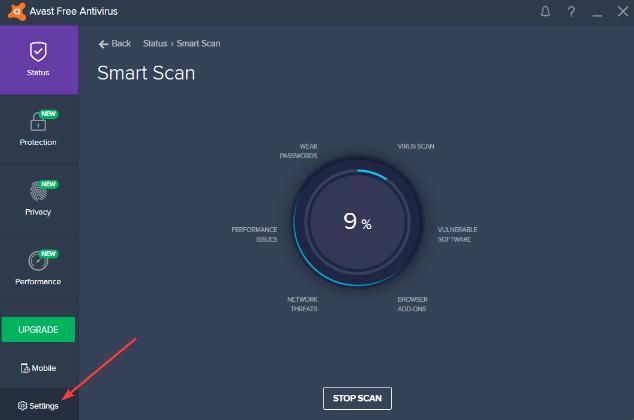

#HOW TO TEMPORARILY DISABLE AVAST ANTIVIRUS SOFTWARE 8.1 WINDOWS#
Note that the feature was called Windows Defender Antivirus on Windows 10. Note that you will still see a shield icon in the system tray area as the Shield icon is the Windows Security icon, not the Microsoft Defender Antivirus icon. Virus & Threat protection should be off after the restart. Select apply then ok to save the change.Switch the state of the policy to Enabled on the page that opens.If you have trouble finding it, click on the "setting" header of the column to sort the list of policies in alphabetical order. Locate "Turn off Microsoft Defender Antivirus" and double-click on the policy.Use the hierarchical structure on the left to go to Computer Configuration > Administrative Templates > Windows Components > Microsoft Defender Antivirus.Select Start, type gpedit.msc and select the result from the list.Toggle Tamper Protection to Off on the page.ĭisable Microsoft Defender Antivirus using the Group Policy Editor.Select Manage Settings under Virus & threat protection settings on the page that opened.On the page that opens, select Virus & Threat protection from the list of protection areas.Select Windows Security on the page that opens.Select Privacy & Security from the menu on the left.Select Start and Settings or use the keyboard shortcut Windows -I to open the Settings application.If you don't, Windows Security may turn on Windows Defender Antivirus again.

Note that it is necessary to disable the Tamper Protection feature of Windows Security before you make the change. To disable Windows Defender Antivirus permanently, you need to use the Group Policy Editor or the corresponding Registry setting. Disable Windows Defender Antivirus using the Group Policy Editor Tip: you may disable other protective modules such as cloud-delivered protection, automatic sample submission or tamper protection here. You can turn off this setting for a short time before it turns back on automatically. Locates and stops malware from installing or running on your device. Windows Security has options to turn off certain security modules, including Real-Time Protection, in the Settings application. Enable or Disable Real-Time Protection in Windows 11 Reasons for wanting to do so include high resource use, Windows Defender Antivirus causing other issues on the system, no requirement for an antivirus solution, e.g., while using a virtual machine image of Windows 11, or simply because of wanting to decide what is running on the computer and what is not. Some may want to turn off Microsoft Defender Antivirus temporarily or permanently, even if no other solution is installed. Most Windows 11 users may want to keep Microsoft Defender Antivirus enabled if no other security solution is installed. Most third-party antivirus solutions that support Windows 11 are recognized, but there may be the odd solution that is not. Previously, it was known as Windows Defender. It is turned on by default, unless another security solution is installed that is recognized by the operating system as such. Microsoft Defender Antivirus is the default antivirus solution of Microsoft's Windows 11 operating system.


 0 kommentar(er)
0 kommentar(er)
